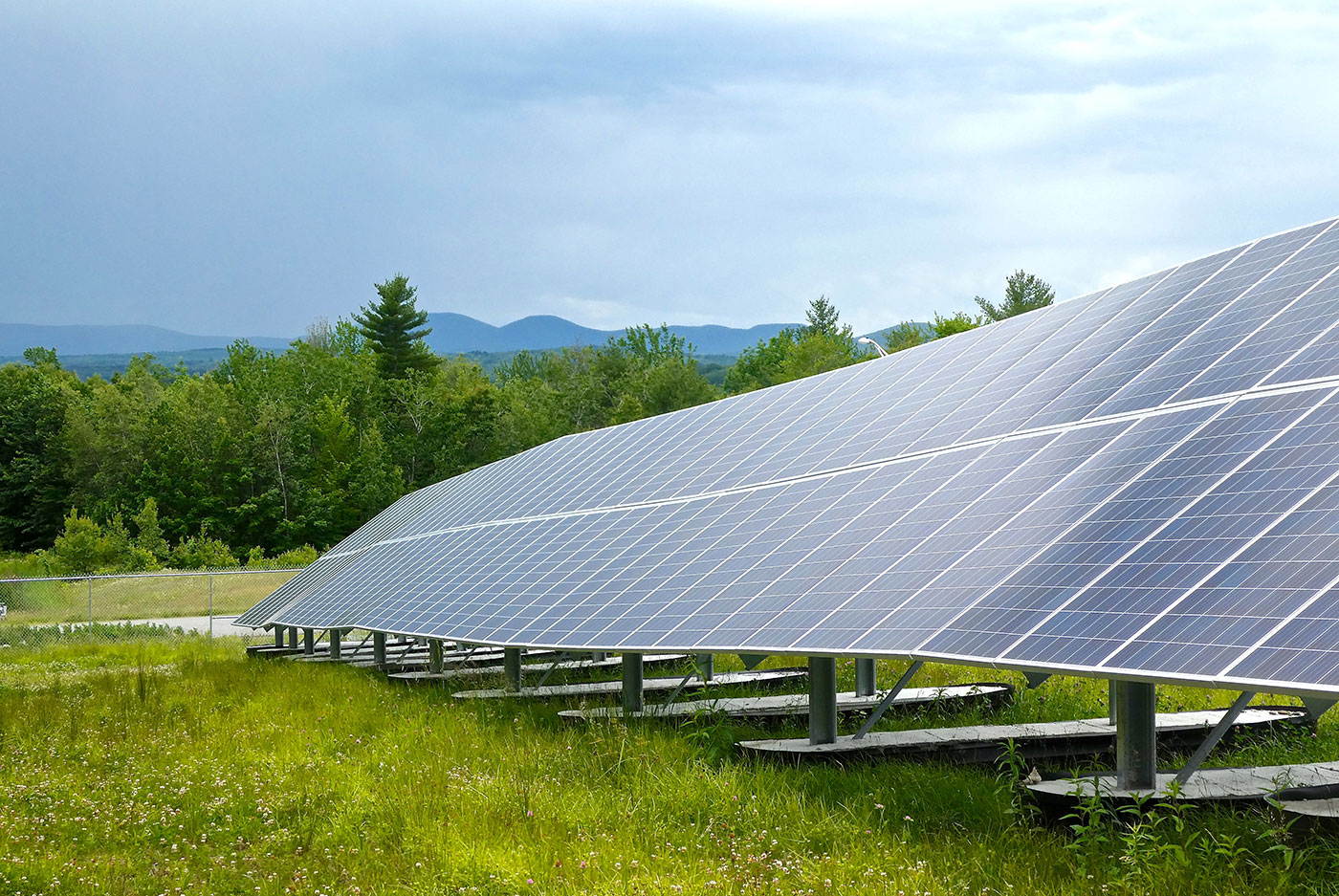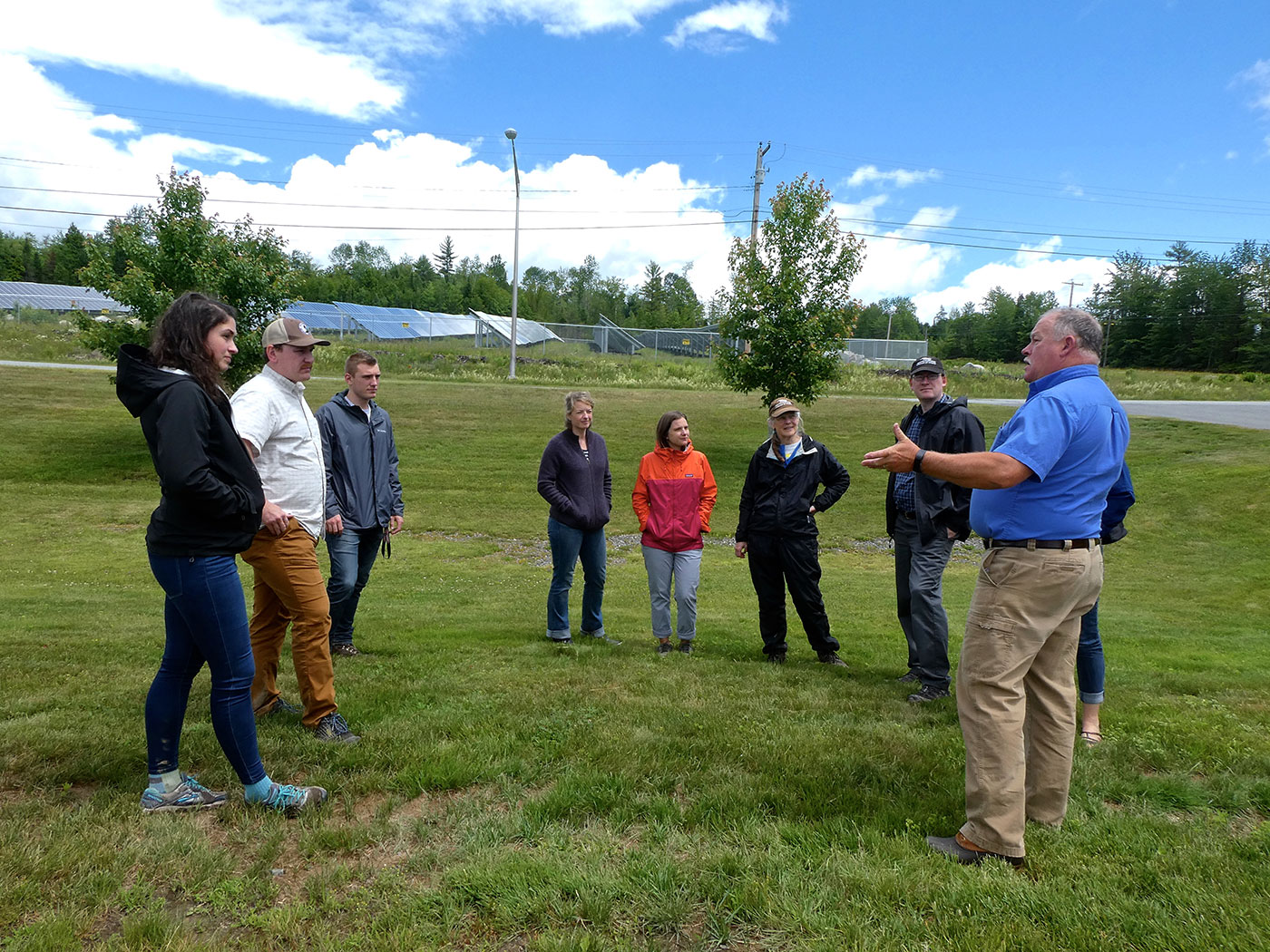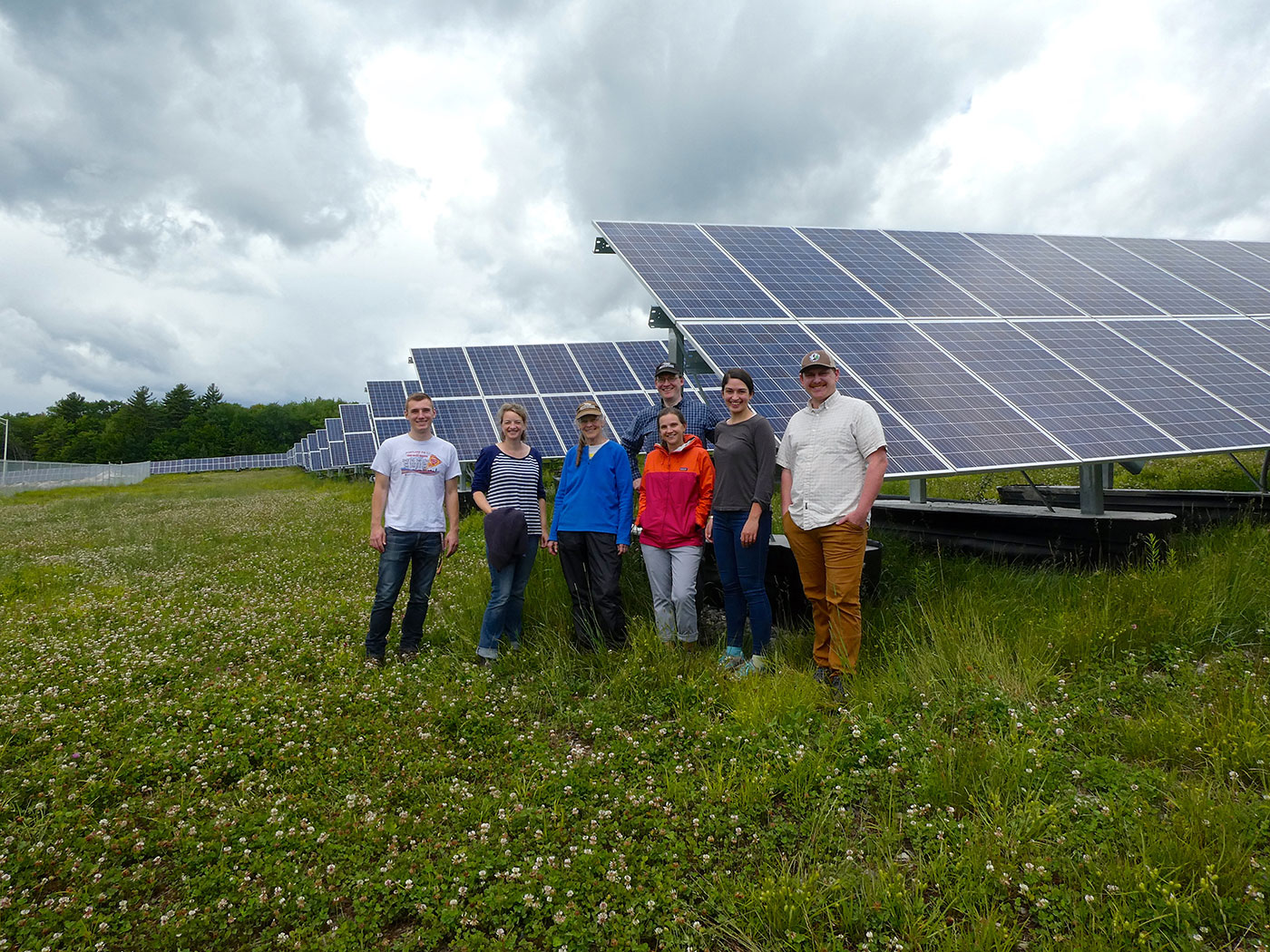I’ve seen plenty of solar panels before. Several years ago, my hometown of Cherry Hill, New Jersey, installed panels no bigger than cafeteria trays on every streetlight in town. My high school had a spattering of panels on the math building’s roof. At Bowdoin College, where I’ll be a junior in the fall, there are panels on academic buildings, athletic facilities, and dorms. Solar energy accounts for eight percent of the College’s electricity consumption, and panels are commonplace to the point of invisibility. I have lived with a daily dose of solar panels for years.
The solar installation at Madison still took my breath away.

The Madison, Maine, solar array includes 26,000 panels and sits on 20 acres in Central Maine. Photo by J.Berk/NRCM
Madison Electric Works oversees 26,000 photovoltaic panels in the town of Madison, Maine. Spread over 20 acres, the installation provides 5 megawatts of energy, enough to power 700 homes. When completed in late 2017, it was the largest installation in Maine, and provides about a fifth of Madison’s total energy. However, at peak production, the solar farm by itself covers Madison’s entire electricity draw. This sometimes-surplus has led Madison Electric Works to pursue development of battery storage technology and facilities, necessary infrastructure for a renewable future as solar panels gain efficiency and eat up an even larger share of total electricity demand.

Superintendent Calvin Ames of Madison Electric Works speaks with NRCM staff during a recent visit. Photo by J.Berk/NRCM
Along with several other staff members from the Natural Resources Council of Maine, I toured the Madison facility in the early afternoon on June 25th. The sky was mercurial, alternatively rainy and overcast but always a headache-inducing kind of bright. At the end of each row of panels, you could hear the inverters humming, but only if you listened closely. As clouds passed over the sun’s face, the panels would purr, not roar, to life. A quiet indication of constant work punctuated by the silence that accompanied temporary darkness.
And there is no indication that the work will stop anytime soon. According to our guide, Calvin Ames, the Superintendent of Madison Electric Works, the panels are expected to lose only 2.5% efficiency over the course of their 20-year lifespan. At that point, he said, the company expects to be able to simply replace existing panels with much-improved ones—the solar boom in recent years has led to more and more funding for research, and efficiency gains have been incredible. It is nearly impossible to predict how much the technology will improve in the coming years, but all signs point to solar panels rapidly improving in quality and efficiency.
Clear Energy, run by Evan Coleman, is a Maine-based development company that started the original development of this project with Ames. Advanced Solar Products, based in New Jersey, did the engineering and procurement, and hired Cianbro of Maine to do the construction. Cianbro also hired other Maine-based subcontractors for racking and electrical work. The current iterations are already resilient and flexible. The Madison panels are rooted in yard-long above-ground concrete blocks, keeping them stable as the ground beneath them moves. They are pitched at an angle that prevents snow from accumulating on the panels, allowing them to continue energy production even in the winter. Below the panels, a locally derived “conservation mix” of grasses and sedges prevents erosion. Even if a panel is damaged or malfunctions, the wiring of the installation allows for easy plug-in of new panels, which will allow gradual improvement in technology and efficiency as the solar farm ages. And, once the installation reaches the end of its natural or economical life, the “clean-up” process is simple. No solar site will require the Superfund. Our guide said that the whole solar farm could once again be an empty lot in two weeks if that time ever came.
Hopefully that time will never come, though, because the site is simply and inarguably beautiful. From above, the installation looks like an air conditioning vent raised from the earth, the panels scooting around blobs of wetland. Up close, the panels are elegant, all deep blues and sharp white lines, technology as modern art framed with steel. From the right angle, you can watch the panels soak up the sun with mountaintops in the background, like something out of a modern reboot of the Hudson River School. Though the panels seem like a natural growth on the land, a logical compliment to the faraway peaks, our guide mentioned that the existence of the solar farm was a Plan B—the land was initially intended to serve as a business park for Madison, but when few businesses were interested, Madison Electric Works converted their 20 acres to a photovoltaic farm. Seeing the installation up close, it is difficult to frame the panels as an eyesore. Contrasting them to the possibility of an empty industrial park makes it a near-impossible argument.

NRCM staff at Madison solar project.
It is easy to get caught up in the sensory details of something so interesting and beautiful as the Madison solar installation—but the mile-high view is so much more important. Climate change is already having tangible, measurable effects on Maine’s environment, Maine’s economy, and Maine’s citizens. Policy solutions for adaptation and mitigation of anthropogenic shifts in the climate are absolutely necessary, and sites like the solar farm in Madison show that clean energy is not only economically viable but economically advantageous for local communities with the means and desire to produce their own energy. The solutions that we need for a sustainable future are already here—go see for yourself.
—by Samuel Milligan, intern with the Natural Resources Council of Maine










Leave a Reply